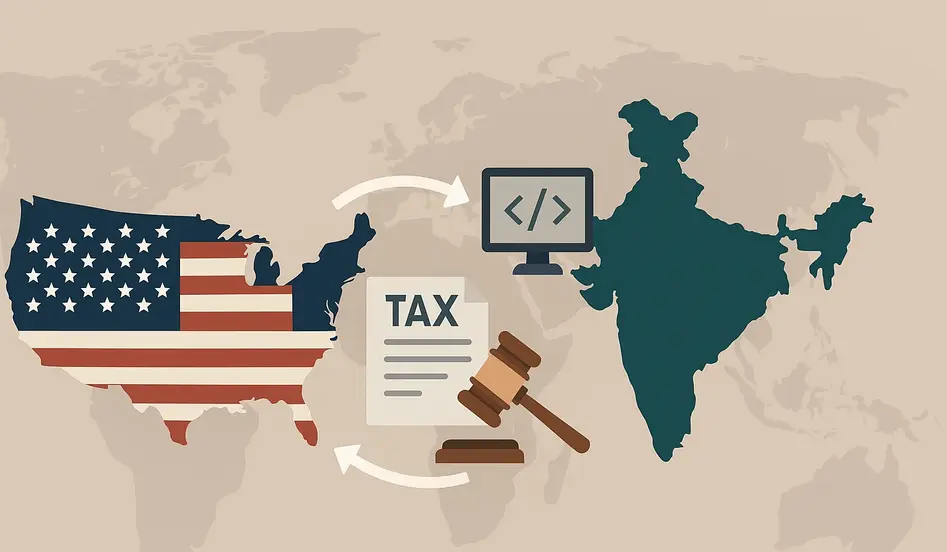The HIR bill Indian IT outsourcing debate is heating up as the US Senate considers a groundbreaking proposal that could fundamentally alter the global technology services landscape. With a proposed 25% tax on US companies outsourcing IT work to India, the HIR bill is poised to disrupt established business models, challenge cost arbitrage, and force both American and Indian firms to rethink their strategies. In this comprehensive analysis, we explore the bill’s details, its potential impact on Indian IT giants, the US talent shortage, H-1B visa restrictions, and the future of global competitiveness in an AI-first world.
What is the HIR Bill? Key Details and Provisions
The HIR (Hiring Incentives for Reshoring) bill is a legislative proposal introduced in the US Senate aimed at curbing the offshoring of technology jobs. The bill, championed by Senator Bernie Morino, seeks to impose a 25% tax on US companies that outsource IT and tech services to foreign countries, with a particular focus on India, the world’s largest IT outsourcing destination. The HIR bill Indian IT outsourcing focus is clear: incentivize American companies to keep jobs onshore and reduce dependency on overseas talent.
Senator Bernie Morino’s Proposal: The Driving Force Behind the HIR Bill
Senator Bernie Morino, a vocal advocate for American job creation, has positioned the HIR bill as a response to growing concerns over the loss of high-skilled tech jobs to countries like India. According to Morino, the 25% outsourcing tax is designed to level the playing field for US workers and address the widening gap in domestic technology talent. In his words, “We must ensure that American innovation is powered by American workers.” (Congress.gov)
Understanding the 25% Outsourcing Tax: How Will It Work?
The core provision of the HIR bill is the imposition of a 25% tax on the value of IT and tech services outsourced by US companies to foreign vendors. This tax would apply to contracts with Indian IT service providers, including industry leaders like TCS, Infosys, and Wipro. The goal is to make offshoring less financially attractive and encourage companies to invest in local talent. The HIR bill Indian IT outsourcing tax is expected to generate significant revenue for the US government while reshaping global sourcing strategies.
HIR Bill Threatens Indian IT Outsourcing
With a proposed 25% tax on US companies, the HIR Bill could reshape the global tech services landscape. Employers who move fast can gain an advantage—post your job on WhatJobs now and access top-tier talent worldwide. Free for 30 days.
Post a Job Free for 30 Days →Impact on Indian IT Firms: Risks and Opportunities
For Indian IT firms, the HIR bill represents both a threat and an opportunity. On one hand, the 25% tax could erode the cost advantage that has fueled India’s rise as a global tech powerhouse. On the other, it may prompt Indian companies to accelerate their investments in US-based delivery centers, partnerships, and talent acquisition.
Cost Arbitrage Analysis: Is the Indian Advantage Over?
Historically, the primary driver of IT outsourcing to India has been cost arbitrage—the ability to deliver high-quality services at a fraction of US labor costs. The HIR bill’s 25% tax could significantly narrow this gap, making it less attractive for US companies to offshore work. However, Indian IT firms have been moving up the value chain, offering advanced digital, cloud, and AI solutions that go beyond simple cost savings. The future of HIR bill Indian IT outsourcing may depend on the ability of Indian firms to deliver innovation, not just low costs.
US Talent Shortage and H-1B Visa Restrictions: A Double-Edged Sword
One of the key challenges facing US tech companies is the persistent shortage of skilled IT professionals. The HIR bill Indian IT outsourcing restrictions could exacerbate this problem, especially in the context of tighter H-1B visa regulations. With fewer opportunities to tap into global talent pools, US firms may struggle to fill critical roles, potentially slowing down digital transformation initiatives. Balancing the need for domestic job creation with the realities of a globalized tech workforce will be a major test for policymakers.
AI-First Transformation: Recommendations for US and Indian Firms
In an era defined by artificial intelligence, both US and Indian companies must embrace an AI-first mindset to stay competitive. The HIR bill Indian IT outsourcing debate underscores the importance of investing in automation, upskilling, and digital innovation. US firms should focus on building robust in-house AI capabilities, while Indian IT providers can differentiate themselves by offering specialized AI solutions and consulting services. Collaboration, rather than confrontation, may be the key to thriving in the new global tech order.
HIR Bill Threatens Indian IT Outsourcing
With a proposed 25% tax on US companies, the HIR Bill could reshape the global tech services landscape. Employers who move fast can gain an advantage—post your job on WhatJobs now and access top-tier talent worldwide. Free for 30 days.
Post a Job Free for 30 Days →Global Competitiveness: What Lies Ahead?
The HIR bill Indian IT outsourcing implications extend far beyond the US and India. As countries around the world compete for tech leadership, policies that restrict cross-border collaboration could have unintended consequences. Maintaining global competitiveness will require a balanced approach that supports domestic innovation while leveraging the strengths of international partners. The coming years will test the resilience and adaptability of the global tech ecosystem.
FAQs: HIR Bill Indian IT Outsourcing
What is the HIR bill and how does it affect Indian IT outsourcing?
The HIR bill is a US legislative proposal that imposes a 25% tax on US companies outsourcing IT services to India, potentially reducing the volume of outsourced work.
Who proposed the HIR bill and why?
Senator Bernie Morino proposed the HIR bill to encourage US companies to hire domestically and reduce reliance on foreign IT talent.
How will the 25% outsourcing tax impact Indian IT firms?
The tax could erode cost advantages for Indian IT firms, forcing them to innovate and invest in US-based operations.
What challenges do US companies face due to the HIR bill Indian IT outsourcing restrictions?
US companies may struggle with talent shortages and higher costs, especially with ongoing H-1B visa restrictions.
What strategies can Indian and US firms adopt in response to the HIR bill Indian IT outsourcing changes?
Firms should invest in AI, upskilling, and cross-border collaboration to remain competitive in the evolving tech landscape.
An IT Professional’s Perspective
Priya Sharma, a senior software engineer at a leading Indian IT firm, shares her experience: “The HIR bill Indian IT outsourcing debate has created a lot of uncertainty in our industry. Many of my US clients are re-evaluating their outsourcing strategies, and we’re seeing increased demand for onshore project managers and consultants. While the 25% tax is a challenge, it’s also pushing us to develop more advanced AI solutions and invest in US-based teams. I believe that with the right approach, Indian IT professionals can continue to add value to global clients, even in a more regulated environment.”
In conclusion, the HIR bill Indian IT outsourcing proposal is a pivotal moment for the global technology sector. By understanding the bill’s implications and preparing for change, both US and Indian firms can navigate the challenges ahead and seize new opportunities in the digital age.




